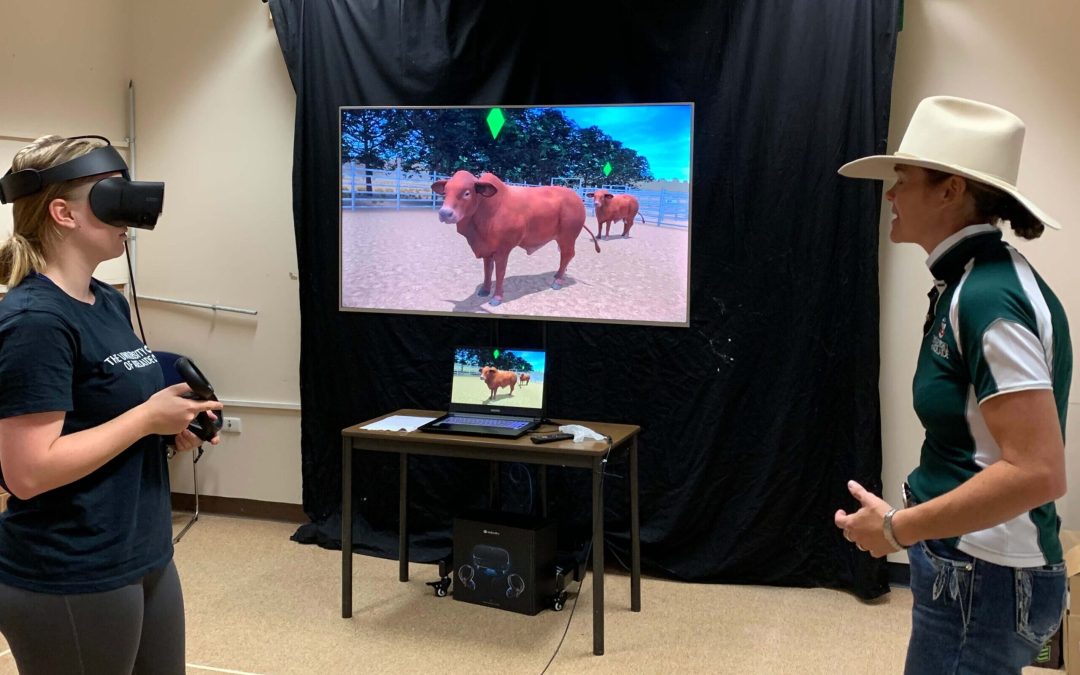Our team has a strong connection to the land, and as it plays out to the University of Adelaide’s Roseworthy College campus, as well.
Our CEO Kat Bidstrup was lucky enough to grow up on a property once owned by The University of Adelaide in the area. When happily rounding up the cows and moving them through the yards on the farm she could never have imagined that one day she would draw on this experience to help create a virtual reality large animal handling training environment for the students there today!
Over the last few weeks at the University of Adelaide’s Roseworthy campus, the Think Digital team have been working with teaching staff to run interactive VR workshops for veterinary science students.
This is the outcome of months of behind-the-scenes work and countless hours spent collaborating with Dr Mandi Carr and our developers to create a lifelike large animal handling VR simulation.
Collaborating with Mandi Carr, it became evident that VR can definitely have a role to play in teaching students, many of whom have never been near a cow, important information about flight zones and where to stand – a kick by a Droughtmaster Australia bull in VR doesn’t hurt! Then it’s into the yards for these students to see if they can remember these lessons in real life.
With the risks posed by students going into a paddock with cattle —the large majority of which have never had experience with cows before – a virtual reality training environment offers the perfect solution to this.
The University of Adelaide’s Virtual Reality Large Animal Handling simulator is designed to give students a risk-free environment to learn to handle cattle. The students enter the yards, learn to move around, and then come face-to-face with a Droughtmaster Australia bull! The students are provided with a diagram of a typical cow’s flight zone and point of balance, however, each animal in the VR simulator has its own personality (just like real life!).
Working with cattle poses a significant risk to the student, especially if they have little prior experience being around and handling large animals. Adding a VR environment to the syllabus before the student enters the real yards not only allows them to feel more comfortable with being around large animals, but gives them time to practice maintaining a safe exit zone, and applying pressure to the animals to properly move them.
An immersive virtual learning environment not only provides an added level of safety, but can be used to complement traditional classroom learning, and allow remote learners to participate. In the current COVID-19 crisis, we are seeing a huge shift towards virtual learning options, and it doesn’t get more immersive than in 360°.
Mandi’s amazing insights into cattle behaviour and steely determination to give her students this experience made this possible, and the cattle responses so accurate.
There were also a few old stock agents and farmers who helped us to make this so realistic – a big shout out especially to Chris Howie and Ian Bidstrup. Bet you never imagined this!


